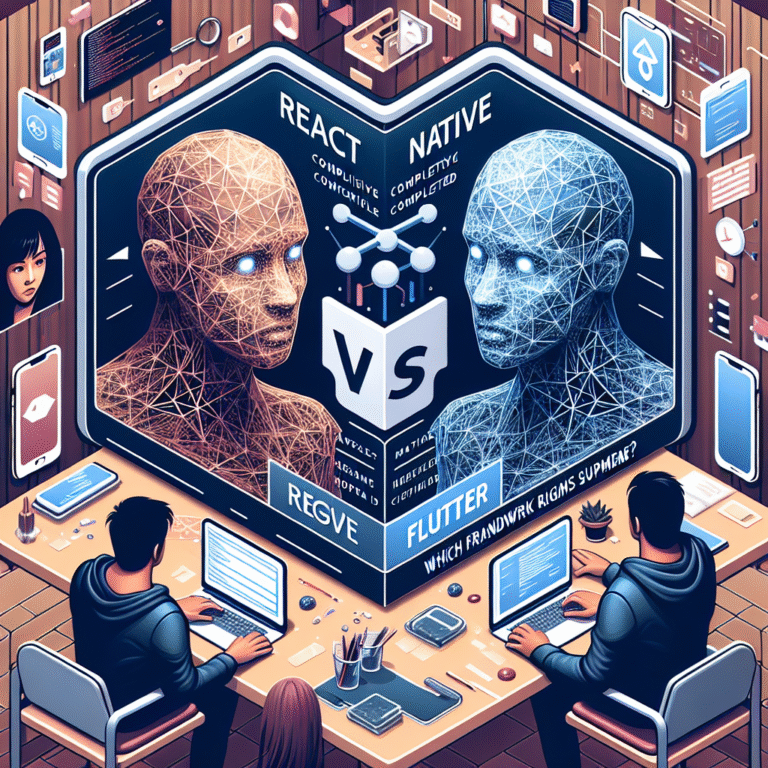Essential Machine Learning Frameworks for Developers
Introduction
Machine learning frameworks are essential tools for developers looking to implement machine learning algorithms. They provide the necessary building blocks to develop, train, and deploy machine learning models efficiently. Understanding the best machine learning frameworks can significantly enhance the productivity of developers and the performance of machine learning applications. For those interested in exploring related fields, consider reading about natural language processing, which is transforming industries.
What is a Machine Learning Framework?
A machine learning framework is a software library designed to facilitate the development and deployment of machine learning models. These frameworks provide pre-built components, libraries, and tools that streamline the coding process. By using frameworks, developers can focus on algorithm development rather than the intricacies of coding from scratch. This efficiency allows developers to innovate and iterate on their ideas more rapidly.
Popular Machine Learning Frameworks
- TensorFlow: An open-source framework developed by Google, TensorFlow is widely used for both deep learning and machine learning tasks. It offers robust tools for model training and deployment.
- PyTorch: Developed by Facebook, PyTorch is known for its flexibility and ease of use, especially in research settings. Its dynamic computation graphs make it a favorite among researchers.
- Keras: A high-level neural networks API written in Python, Keras runs on top of TensorFlow. It is user-friendly and designed for fast experimentation.
- Scikit-learn: This Python library is ideal for classical machine learning algorithms. Scikit-learn provides simple tools for data mining and data analysis.
- Apache MXNet: An open-source deep learning framework that supports multiple languages, MXNet is known for its scalability and efficiency in training deep learning models.
Criteria for Choosing a Machine Learning Framework
Selecting the right machine learning framework depends on several factors:
- Ease of use: A beginner-friendly framework can significantly reduce the learning curve and enhance productivity.
- Community support: A strong community can provide valuable resources and troubleshooting assistance. Frameworks with active communities often have more tutorials and forums to help users.
- Performance and scalability: Frameworks should be capable of handling large datasets and complex models efficiently, making them suitable for various applications.
- Compatibility with tools: Frameworks should integrate seamlessly with other development tools and libraries, allowing for a smoother development process.
Comparison of Leading Frameworks
| Framework | Ease of Use | Performance | Community Support | Scalability |
|---|---|---|---|---|
| TensorFlow | Moderate | High | Excellent | High |
| PyTorch | Easy | High | Very Good | Moderate |
| Keras | Very Easy | Moderate | Good | Moderate |
| Scikit-learn | Easy | Moderate | Excellent | Low |
| Apache MXNet | Moderate | High | Good | Very High |
Getting Started with Machine Learning Frameworks
Here are some installation guides and basic examples to get you started with popular machine learning frameworks:
- TensorFlow: To install TensorFlow, run:
pip install tensorflow. A simple example to create a linear model can be found in the TensorFlow documentation. - PyTorch: Install PyTorch with:
pip install torch torchvision. Check the official PyTorch tutorials for a simple image classification example. - Keras: Keras can be installed via:
pip install keras. Begin with a basic neural network for digit classification using the MNIST dataset. - Scikit-learn: Install it using:
pip install scikit-learn. A beginner’s guide to linear regression can serve as a great start. - Apache MXNet: For installation, use:
pip install mxnet. Explore their documentation for a basic deep learning example.
Best Practices for Using ML Frameworks
To maximize the effectiveness of machine learning frameworks, consider the following best practices:
- Efficient coding: Use built-in functions and libraries to minimize redundant code, ultimately speeding up your development process.
- Version control: Keep track of your code and model versions using Git or similar tools, ensuring you can revert to previous versions if needed.
- Documentation: Document your code and models thoroughly for future reference, making it easier for you or others to understand your work later.
- Testing: Regularly test your models with different datasets to ensure robustness and accuracy of predictions.
Common pitfalls to avoid include neglecting data preprocessing, overfitting models, and ignoring performance monitoring. By adhering to best practices, developers can enhance their productivity and the quality of their machine learning applications.
Future Trends in Machine Learning Frameworks
The landscape of machine learning frameworks is continuously evolving. Some future trends to watch include:
- Emerging frameworks: New frameworks are being developed that prioritize simplicity and speed, making them more accessible to new developers.
- Innovations: Existing frameworks are seeing improvements in their core features, with a focus on user experience and computational efficiency.
- Integration with cloud platforms: More frameworks are incorporating cloud capabilities to enhance scalability and accessibility, allowing developers to leverage cloud resources effectively.
FAQ
- What is the best framework for beginners? Keras is often recommended for beginners due to its user-friendly API, making it easier to grasp fundamental concepts of machine learning.
- Which framework is more efficient for large datasets? TensorFlow and Apache MXNet are known for their efficiency with large datasets, enabling faster model training and deployment.
- How do I choose between TensorFlow and PyTorch? Consider your specific needs: TensorFlow for production and scalability, PyTorch for research and flexibility.
- Can I use multiple frameworks in one project? Yes, many projects combine frameworks to leverage the strengths of each, allowing for a more versatile development approach.




